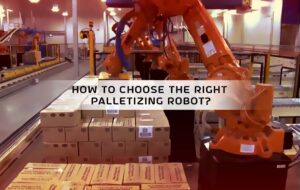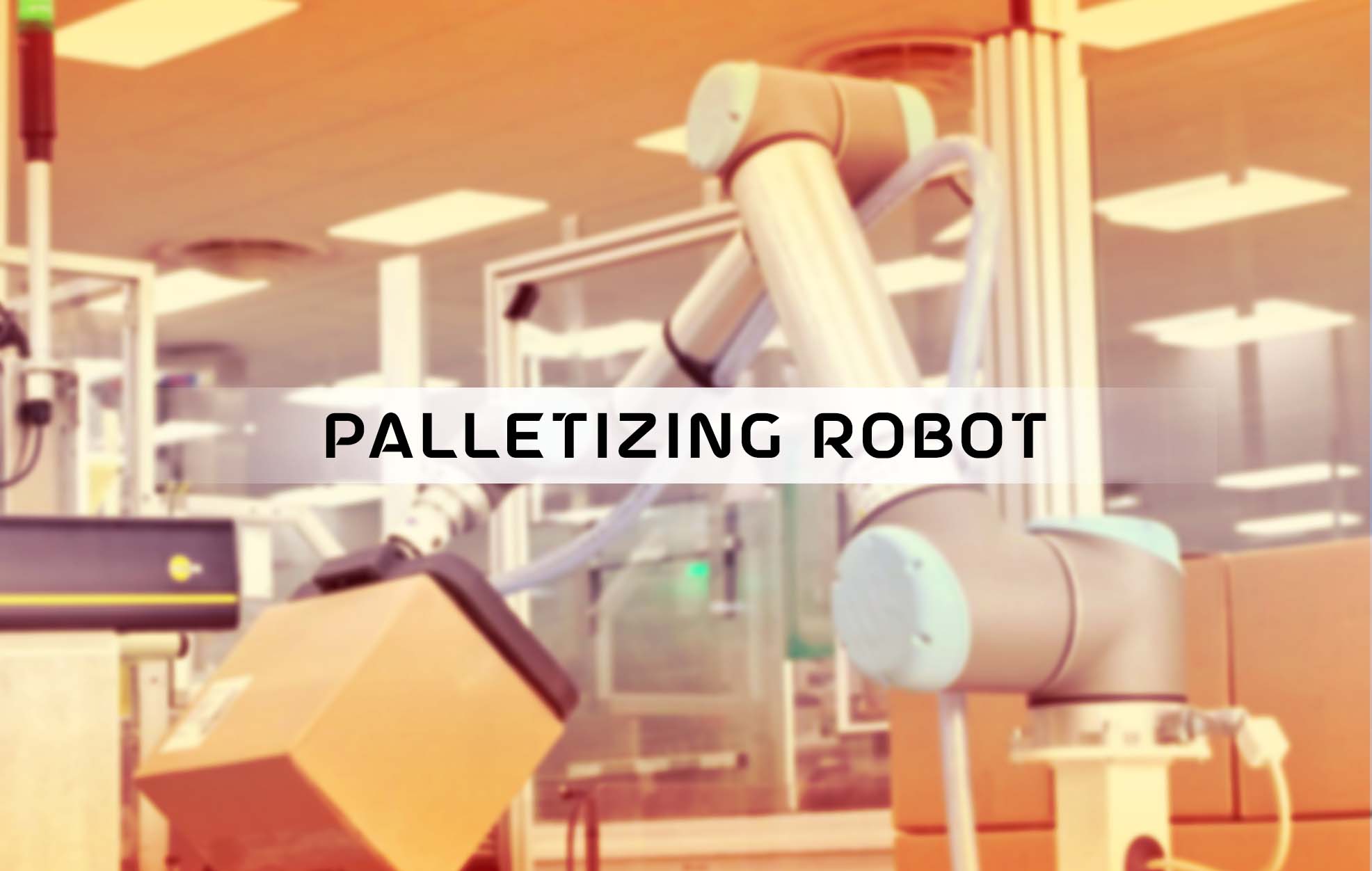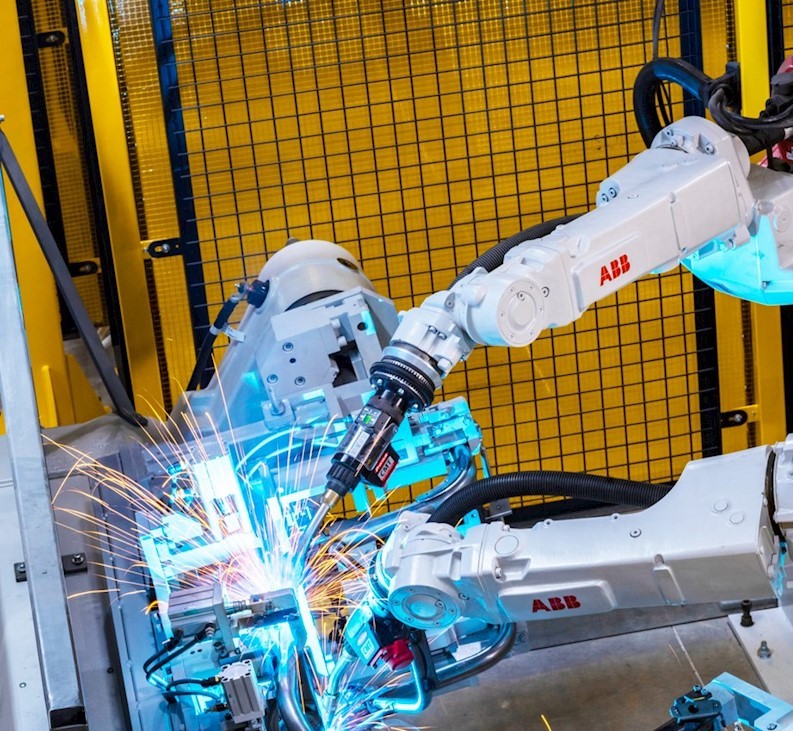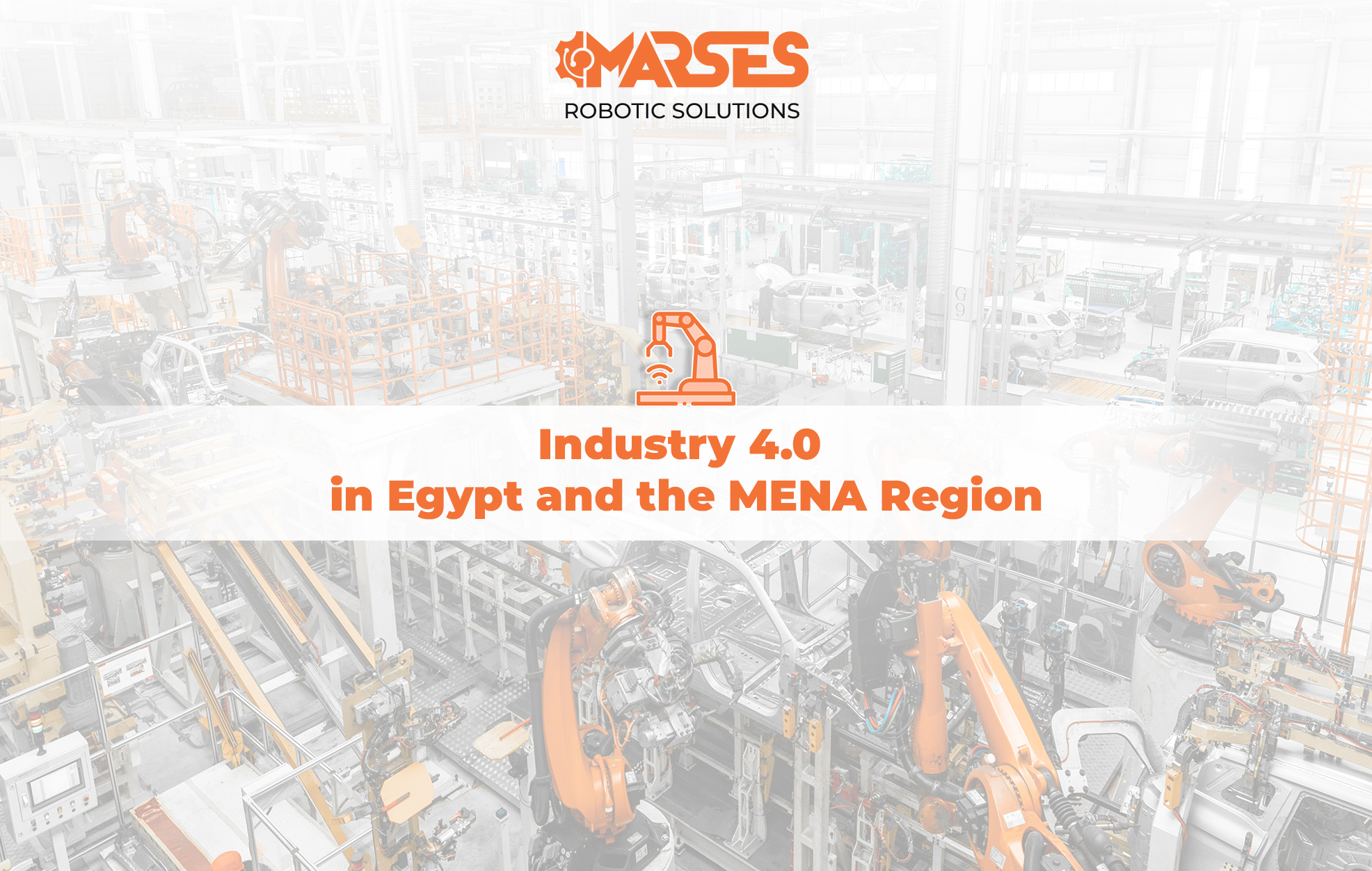Palletizing robots
Palletizing robots, or palletizers, are systems that automatically stack and pack products onto pallets for transportation or storage, offering a highly efficient, rapid, and cost-effective solution compared to manual labor. This article provides a comprehensive guide on palletizing systems, including the different types and applications, and their advantages.
Benefits of Palletizing Robots
A company can invest in palletizing automation for several reasons, including:
- Increased efficiency: Palletizing automation can boost the speed and efficiency of the production process, as automated machines can palletize boxes or containers much more quickly than manual labor, resulting in faster production turnaround times.
- Improved accuracy: Automated palletizing machines are highly accurate and consistent in their handling of boxes or containers, which can help reduce errors and minimize waste.
- Enhanced safety: Palletizing automation can eliminate the risk of workplace injuries associated with manual labor, which can be a hazardous task involving heavy lifting and repetitive motion.
- Cost savings: Although palletizing automation may incur high upfront costs, the long-term savings can be significant, as automated machines require less maintenance and can operate continuously, enabling increased production without the need for additional labor.
- Increased flexibility: Automated palletizing machines can be easily reprogrammed to handle different box sizes and configurations, allowing for greater adaptability and flexibility in the production process.
- Improved product quality: Automated palletizing machines can stack boxes or containers evenly and securely, reducing the risk of damage during transportation.
Types of Palletizing Robots
1- High-level palletizers: These machines stack products on pallets at a high level, usually by using an overhead conveyor system. High-level palletizers are typically used in facilities with limited floor space.
Pros:
- High-level palletizers are very efficient, with a high throughput rate and low labor requirements.
- They can handle a wide range of products and packaging types.
- They can be configured for multiple palletizing patterns and handle complex palletizing configurations.
- They save floor space as they are mounted on an overhead conveyor system.
Cons:
- High-level palletizers are typically more expensive to install and maintain than other types of palletizers.
- They require a high degree of automation and a sophisticated control system, which can be complex to manage.
- They may require special modifications to existing facilities to accommodate the overhead conveyor system.
- They may not be suitable for heavy, bulky, or irregularly shaped products.
2- Low-level palletizers: These machines stack products on pallets at a lower level, usually at floor level. Low-level palletizers are typically used in facilities with ample floor space.
Pros:
- Low-level palletizers are simpler and less expensive than high-level palletizers, with lower installation and maintenance costs.
- They can handle a wide range of products and packaging types.
- They are easier to install and maintain than high-level palletizers.
Cons:
- They require more floor space than high-level palletizers.
- They may not be suitable for heavy, bulky, or irregularly shaped products.
3- Robotic palletizers: These machines use robotic arms to stack products on pallets. Robotic palletizers are highly versatile and can handle a wide variety of products and pallet types.
Pros:
- Robotic palletizers are highly versatile and can handle a wide range of product types and pallet configurations.
- They are flexible and can be easily reconfigured for different products and packaging types.
- They have a high throughput rate and low labor requirements.
- They are easy to operate and require minimal training.
Cons:
- Robotic palletizers are typically more expensive to install and maintain than some low-level palletizers.
- They may not be suitable for products that are very heavy or very large.
Applications of Palletizing Robots
Palletizing robots are used in various industries, including food and beverage, pharmaceuticals, consumer goods, and manufacturing. These robots are used to stack cases, bags, and drums of liquid products onto pallets for easier transport.
How to Choose the Right Palletizing Robot?

When selecting a palletizing robot, several factors need to be considered, including payload capacity, reach, speed, flexibility, and integration. It’s essential to work with a reputable robotic integrator that offers turnkey solutions, including everything from initial consultation and design to installation, programming, and ongoing support.
6 Reasons to work with MARSES Robotics:
- Expertise and experience: Specialized knowledge and experience in designing and integrating robotic systems. With a deep understanding of the latest robotic technologies, programming languages, and software applications. MARSES Robotics also have experience working with a wide range of industries and applications, allowing them to provide customized solutions that meet the specific needs of each customer.
- Turnkey solutions: MARSES Robotics offers turnkey solutions that include everything from the initial consultation and design to installation, programming, and ongoing support. This ensures that the customer receives a complete and fully functional system without managing multiple vendors or subcontractors.
- Cost-effectiveness: While the initial investment in a robotic system may be high, we can provide cost-effective solutions by optimizing the system for the specific application and minimizing downtime and maintenance costs.
- Increased efficiency and productivity: Robotic systems can perform tasks much faster and more accurately than human operators, leading to increased efficiency and productivity. MARSES Robotics can design systems that are tailored to the specific needs of the customer, resulting in improved process efficiency and reduced labor costs.
- Improved quality and safety: Robotic systems can perform tasks with greater precision and consistency than human operators, resulting in improved product quality. They can also perform dangerous or repetitive tasks that may pose a safety risk to human operators.
- Locally available across the MENA Region: Having a local team allows for quick response times in case of any issues or emergencies, minimizing downtime and reducing the risk of production losses. A local presence also enables MARSES Robotics to better understand the client’s needs and tailor solutions to meet their specific requirements.Discover more about MARSES Industrial Solutions:
https://www.marses-robotics.com/industrial-home/





